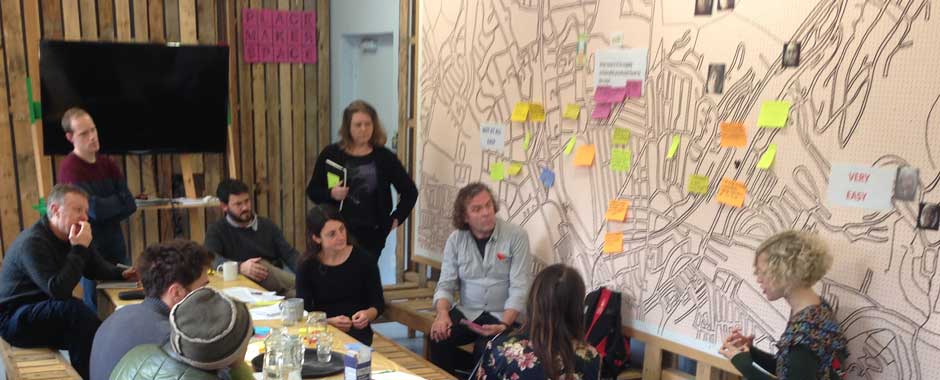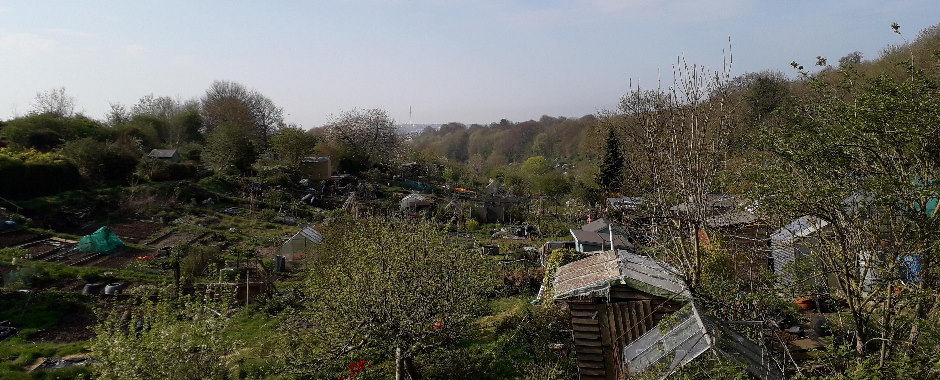As we approach the end of week 7 of the UK government’s Covid-19 social distancing measures, we have been witnessing a combination of remarkable efforts to sustain the country through this challenging time. Workers from the National Health Service (supplemented by volunteer responders) and other ‘key workers’ are applauded across the country on a weekly basis. Local authorities and neighbourhoods have been mobilising to look after their most vulnerable.
Like many academics, I’ve been asking myself how my work is relevant in this context. The combination of national/government-led and bottom-up approaches has led me to reflect on whether our international work on ‘grassroots innovation movements’ and ‘hybrid pathways to sustainability’ might offer lessons about how these various efforts may come together to enable longer-term transformations in our food systems? Maybe not… but I offer some thoughts below.
At the national level, the arrival of the virus has posed significant challenges to national food planning and prompted calls for more government intervention to ensure healthy diets for all. Recent news stories have suggested that food supplies are sufficient, but that panic-buying temporarily led to reduced supermarket stocks in March and disrupted conventional supply chains. Responding to the threat of increased food insecurity since the Covid-19 lockdown (explored in this study), the government has now reported delivering over a million food boxes to those at highest risk across England. At the same time charities have played a central role, working alongside and with some support from retailers in a hybrid approach.
Brighton & Hove is a city of nearly 300,000 people on the South Coast of England. As part of the work of the ‘Pathways’ transformative knowledge network, the UK hub adopted Brighton and Hove’s food system as its focus for action research. Since a co-design workshop in 2015, we have been conducting research and working with local organisations to better understand how the food system could be made more sustainable, both in terms of food production and distribution.

Central to the local organisations we have worked with is the Brighton and Hove Food Partnership, a multi-stakeholder platform that has been adopting a citywide approach to food through various ‘City Food Strategy’ processes since 2006. This approach has brought together key groups around food and acted as a focus for co-ordination, building trusted relationships and mutual understanding of the different roles that these groups can play in building a healthy, sustainable and fair food system.
These kinds of relationships have come to the fore during the pandemic response. As illustrated in this blogpost written over a month ago by Iain Chambers, they have enabled a speed of collaboration that would have been impossible if it had relied on formal contracts, impact assessments or command structures. This kind of mobilisation has reduced the risk of food insecurity at household levels, with a consequent reduction in various knock-on social impacts of the pandemic.
More broadly across the city, the Food Partnership has been supporting a citywide Covid-19 emergency food network. This has included existing food banks (for example, see this blogpost by Simeon Elliot for a ‘view from the front line’). It has also involved setting up some temporary neighbourhood food hubs to distribute parcels or meals to people who find themselves without money – both people who were previously using food banks or shared meals, and people who have never done so before.
There are now 45 organisations working as part of the network, with more emerging and joining up. During the week of 30 March, the network delivered 1,400 parcels and 1,800 meals (up from 420 parcels a week prior to the crisis). Last week (commencing 27 April) that total had increased to approximately 2,416 food parcels*. A crowdfunding campaign to buy food and essential items raised well over £30,000, a sum that is being matched by Brighton & Hove City Council.
On the production side, the city’s allotments are buzzing, and neighbours have been sharing free seeds that they had saved from the UK’s largest community seed swap, ‘Seedy Sunday’, in February. The Food Partnership has been supporting a campaign for gardeners to ‘grow an extra row’ (of vegetables) to supply to food charities. Without central co-ordination, the city is experimenting with the potential for urban agriculture.
What next?
At the same time, the UK Cabinet is considering the possibility of easing some lock-down measures, and local food networks are beginning to discuss what an exit strategy from this emergency response might look like. There is clearly a role for both government and communities here, but how do they come together? And where do they lead?
Our work on grassroots innovation movements suggests that government interventions can either support or disrupt community-led activities. Imposing managerialist targets, rigid structures or formal financial arrangements may work in official circles – but they may also neglect the values, trust and community ownership that are central to the functioning of these local initiatives. Sustained political and financial support to grassroots efforts would provide a more flexible and adaptable response, and may be more welcome.
Where does this all lead us? In early April, Phil Holtam asked a similar question, calling for a right to healthy, sustainably-produced food for all citizens. On 22nd April Vicki Hird of the campaign group Sustain asked whether Covid-19 was driving a new food and farming system, suggesting approaches through which the government could support food supplies to consumers in need, strengthen and replicate shorter supply chains and infrastructure, and diversify cropping and agro-ecology through the new Agriculture Bill.
These all sound sensible to me, but the transformations they represent will be far from easy. And they will need to address the underlying causes of poverty and our unsustainable food system.
Over the longer term, for a city like Brighton and Hove, these measures will represent significant additional burdens for the local authority, food networks and retailers. They will require political commitment from national and local government (supported by citizens) and careful attention to how these hybrids come together. They will also need to draw on knowledge and experience from diverse quarters. But despite the challenges ahead, these are transformations that are worth striving for.
* Data provided by Brighton & Hove Food Partnership (1/5/2020), partially on the basis of informal reporting from across the network
About the author
Adrian Ely is a Reader in Technology and Sustainability at the University of Sussex, a member of the Brighton & Hove Food Strategy Action Plan expert panel and co-convenor of the Brighton and Sussex Universities Food Network.
Further reading
For more on this topic, see our collection of articles on responding to coronavirus and other outbreaks of disease.

The work continues. An update from the Brighton & Hove Food Partnership director Vic Borrill (18 June):
https://bhfood.org.uk/an-update-on-the-covid-food-response/